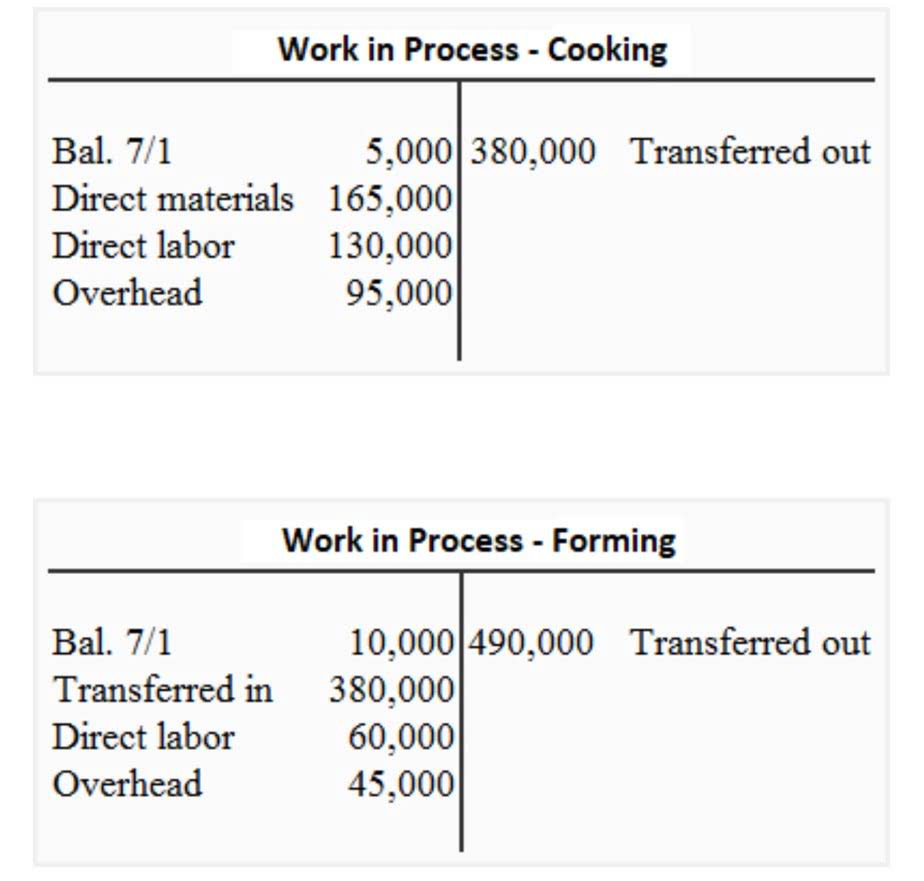What is Inventory Tracking? Methods, Challenges & Systems

Inventory turnover also involves keeping a close pulse on each SKU across all locations and sales channels so you replenish inventory in a timely manner. Being able to set reorder notification points (or the unit count or threshold at which you need to order more stock) is critical to set up, and easy to automate through fulfillment platforms like ShipBob. Merchant A clearly has a much more accurate https://www.bookstime.com/ way to track inventory than Merchant B. RFID technology offers several benefits, including improved accuracy, faster data capture, and the ability to track items in real-time without line-of-sight requirements. The primary benefit of the weighted average cost method is that it’s the simplest way to track inventory expenses, as it requires less paperwork and uses only a single cost calculation.
Real-Time Supply Chain Tracking
- Some of the top ways to forecast your demand include a moving average, exponential smoothing, time series analysis and judgmental forecasting.
- Each method may work well for certain kinds of businesses and less so for others.
- A robust inventory tracking system can help you mitigate these risks by providing par-level alerts, more accurate forecasts, and practical contingency plans.
- Inventory management impacts production, warehouse costs, and order fulfillment.
- An essential pillar of sustainability is inventory tracking – a way to manage and assess essential inventory information.
The four primary sources of shrinkage are shoplifting, employee theft, paperwork errors, and supplier/vendor fraud. The best way to track inventory is through regular and systematic inventory tracking methods to help you take preventive measures. The retail supply chain begins with the manufacturer, which creates and makes the product. From there, the product travels to suppliers or distributors, which purchase the products from the manufacturer with the intent of distributing them either directly to the customer or, more often, to retailers.

What is the difference between inventory management and warehouse inventory management?
Inventory must be insured, and if it is not used up or sold in time it may have to be disposed of at clearance prices—or simply destroyed. Manual audits usually mean you frequently inspect and evaluate all of your inventory on a routine schedule that works for you. Some choose to conduct these audits a few times a day, others choose a few times a week depending on the type, quantity, and value of stock they hold. Businesses with less inventory of smaller value may audit at longer intervals, and those with more quantities that are worth more may audit more frequently. The actual audit consists of recording the location and quantity of inventory you have stored for each SKU and the movement of stock (inflow and outflow).
- Tracking tools provide data on how much inventory a company owns, plus the current status of the inventory.
- Luckily, you can avoid these roadblocks by incorporating simple inventory management procedures and tools into your operating plan.
- Inventory shrinkage refers to the difference between recorded inventory levels and the actual physical inventory levels in a business.
- Manual systems may work for smaller operations, but as your business grows, investing in automated solutions saves time and reduces errors.
key areas to track inventory in the supply chain
Any ecommerce company can have the best marketing campaign in history but will fall flat with consumers if they fail to live up to their shipping expectations. In order to meet customer expectations around deliveries, ShipBob helps merchants set the proper inventory and retail fulfillment strategy in place. Most 3PL companies today provide sophisticated software that lets you digitally review your entire inventory from the comfort of your own home. Integrated software connects to your online store(s) and lets you sync SKUs and orders to view all inventory, fulfillment centers, sales channels, and customers in one place. Inventory tracking would be far easier if all your products stayed put in one warehouse and never moved around.
- Inventory management deals with receiving, tracking and storing the products you hold, plus provides data for informed purchasing.
- And yet, it’s crucial you take care of returns in a timely, thoughtful manner that translates to customer satisfaction and accuracy among your inventory counts.
- “No one wants to buy spoiled milk.” Among other innovations, Cook brought just-in-time manufacturing practices to Apple, reportedly reducing its inventory turnover time from months to as little as five days.
- Consider the long-term benefits and potential time savings when evaluating this investment.
- These underlying causes are highlighted to the auditors, allowing them ample time to review their current processes and fine-tune them.
- Poor warehouse organization can lead to difficulties in locating and managing inventory effectively, resulting in order fulfillment delays and inaccurate stock levels.
Manual audits

Speed Commerce has a strong record of accomplishment and extensive experience in the eCommerce and fulfillment industry. We utilize sophisticated inventory management software, barcode scanning, to enhance the accuracy and efficiency of inventory tracking. By implementing these tips and continuously evaluating and improving your inventory tracking processes, you can enhance efficiency, reduce costs, and better meet customer demands.

Most Persistent Inventory Tracking Challenges
When a business gains an accurate picture of stock levels, it can make informed decisions, make more profits, and save business costs. In this blog, we have covered everything you need about inventory tracking – the types, methods, benefits, and challenges involved. While prices depend on the features the system offers, computerized inventory tracking systems can be quite expensive, especially when compared with manual systems. For instance, a barcode system typically costs around $1000 USD and an RFID reader costs a little more, around $1,500-$3,000 USD.




